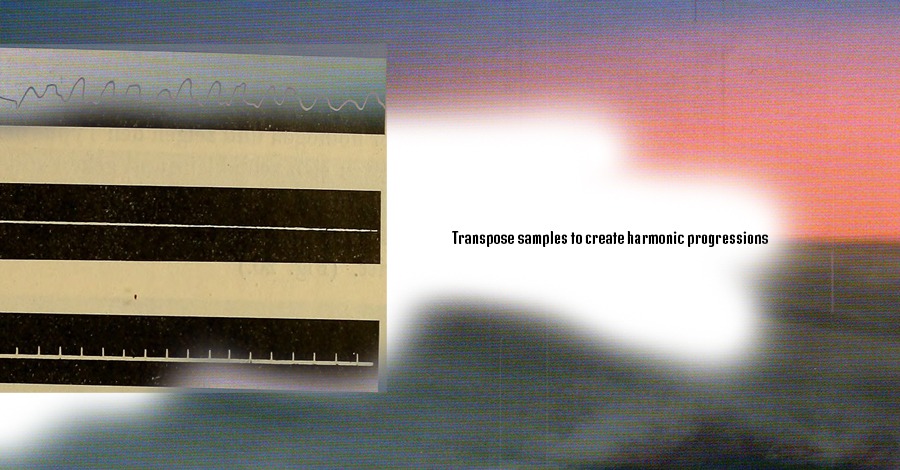Good musical ideas always work on their own, however, effective arrangements turn them into music that communicates on a deeper level.
A powerful arrangement is how you give your track the best presentation it could possibly get.
However, creating good arrangements once you working with samples is not simple.
In this article, I will go through 7 sample ideas for working with samples.
1. Use busy samples for fills and transitions
The most complex and exciting sounds usually seem the most fascinating once you are browsing samples out of context.
However, when you get them into your sessions they don’t always fit. Overly busy samples could distract from more foundational elements of your arrangement.
Your kick, snare, bass, vocals, and main melodies should never be overshadowed by flashy samples.
Instead, use these more active samples for fills, transitions and other moments where you should up the drama in your arrangement.
This method you get to save your most attention-grabbing sounds to emphasize key moments in your tracks.
2. Utilize noise samples to fill out sparse moments
Most of the time you want to reduce the impact of excess noise in your recordings.
However, sampled vinyl noise, atmospheric noise, or other non-tonal material could be good combine glue in small doses.
It could even be a main element of the texture when pads, leads or vocals are out.
Great atmospheric noise layered with SFX samples could give your productions a unique character.
And non-tonal elements could help you keep a sparse part from feeling flat or boring.
When you get used to the quality of noise that could improve a combination, you will have lots of new ideas.
3. Use modified versions of your main samples to create variation
When you have used a distinctive sample for one of the main elements of your track, your listeners will familiarize themselves with it rapidly—whether they know it or not.
That means they will recognize it in a lot of different forms, even it’s been chopped up, reversed, slowed down or quickly retriggered.
Exploit that familiarity to get creative with your samples. Many sample-based arrangements introduce a sample early in the track and mangle it till it’s barely recognizable by the end.
That is an efficient approach for making a sense of linear development over the course of a whole track.
4. Don’t overuse vocal hooks
Finding the best vocal sample ever could feel such as you have struck gold. However, if you wish to keep the magic alive, do not overuse it.
Some incredible tracks depend on a single vocal sample throughout as a type of mantra, however, there’s an extremely fine line between meaningful repetition and bad cliche.
Instead, deploy your vocal hooks with care to provide them with maximum impact in your arrangement.
Set up huge vocal moments with other arrangement elements such as builds or drum fills to pack as much drama into them as possible
Vocals are the most human element of your production—do not waste the opportunities to make them count.
5. Watch for conflicts between loops and MIDI instruments
Including drums or bass from a VST plugin to a looped groove that wants a bit extra punch is a classic approach for working with samples.
However, you must be careful when including percussive material or layered sounds with a lot of low end.
Large timing differences between a plugin and a drum loop could introduce annoying “flam” effects.
This happens when the hits are so far out of sync that you perceive the onset of each transient individually.
6. Be aware of the stereo field
Production and arrangement overlap more than many people think they do.
Varying the content of the stereo field is a fantastic arrangement approach that could add extra emphasis to any new part in your track.
Be sure to pay attention to the stereo field when you are relying on samples to fill out this space.
Watch for the width and spread of stereo samples as you audition them, and make sure to vary the panning of your mono samples throughout your track.
Make your panning choices appropriately based on the development of the track.
Opening up the stereo width for a chorus and restricting it again for a build-up are super effective arrangement flourishes.
7. Transpose samples to create harmonic progressions
Sample transpose is a strong tool.
Repitching a sample could give it a distinct vibe, however, it’s also a good way to make harmonic progressions.
Brush up on your ear training skills and begin transposing samples with a chord progression in mind.
It might surprise you to learn that many classic tracks are built entirely on parallel chords from transposed samples.
And remember to reference your diatonic chords in terms of utilizing samples with harmonic content—your samples may work in more places than you think!
Editable arrangements
The arrangement is one of the core disciplines in music composition for a reason.
Good arrangements provide depth and drama to enhance a track’s emotional impact. The same is true for sample-based music.
Try these tips the next time you are struggling to make compelling arrangements with working with samples.




